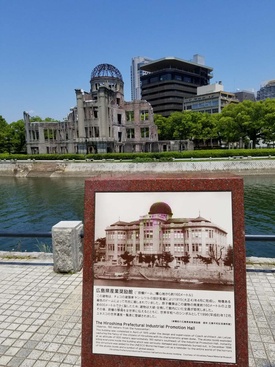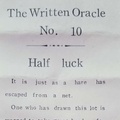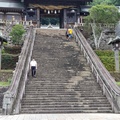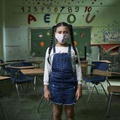RADIATION AND THE ORIGIN OF HIBAKUSHA
Radiation from the atomic bombs, black radioactive coloring from the black rain, and contamination from the dead bodies impacted the water supply BEFORE other victims experienced a thirst that became unquenchable. At this point, the victims who were clinging to life were so thirsty and disoriented, that all they could do was beg for water. Instead, they received a toxic contaminated mixture that should've no longer been called water.
Perhaps in Hiroshima, bomb victims were exposed to a chemical reaction in their bodies that created Hydrogen gas and Uranium Oxide. Uranium Oxide combinations often produce a yellow powder. There were reports of victims vomiting a yellow substance after drinking the contaminated water.
Perhaps in Nagasaki, bomb victims were exposed to a chemical reaction in their bodies that created Hydrogen gas and Plutonium Oxide. Plutonium Oxide combinations often produce yellow or olive green solids. The victims vomited some of this substance, and whatever was not vomited became solidified inside their bodies.
Imagine the other victims who were alive and not clinging to their lives, who offered water to others. They observed very quickly that those who thirsted for water and drank it died. Their help actually led to quicker death. Imagine the confusion and the shock. Imagine being torn due to helping others slowly dying, whether they drank the water or not. Those who were slowly dying were darned if they drank the contaminated water, and darned if they didn't.
Imagine victims losing their skin, or their skin hanging like strings. Imagine clothes being stuck on victims' bodies, due to the impact of the bombs. Then imagine the victims finding the bodies of families and friends. Some survivors were the only remnants of their immediate families; many were widowed and orphaned. Many were left unemployed.
After such a horrific ordeal, the survivors would anticipate medical, economic, and emotional support from their beloved country. Unfortunately, this was far from the truth. After losing loved ones and their quality of life and health, the bomb survivors also lost acceptance from their own people. The survivors were treated like defects themselves, labeled as "Hibakusha," and seen as a detriment to the rest of Japanese society. This treatment contributed to an already existing reality that their lives were forever changed. After giving up on the concept of returning to a normal life, many survivors had to leave behind the lives and people they knew.
BEING HIBAKUSHA AND STARTING OVER: LIFE IN AMERICA
After being denied various opportunities in Japan including meeting marriage prospects, many Hibakusha decided to pursue the American dream. Since there were many people of Japanese ancestry in the States, marriage prospects and livelihood seemed more likely in America than in Japan. Finding marriage prospects seemed to be the easy part; establishing better quality health and livelihood turned out to be a challenge for many decades.
Perhaps this new life was meant to escape the emotional, physical, and economic trauma from the immediate effects that were experienced after the bombings. However, once hibakusha began to recognize the long-term health effects from the bombings--such as leukemia and other cancers, they decided to seek retribution from the U.S. Federal Government. The hibakusha were denied assistance for many years, due to being stigmatized as citizens of the "enemy." The U.S. Government was adamant about refusing accountability for radioactive effects. In the end, many hibakusha had to receive help from Japan, the country that rejected them first.
Many American citizens still believe that the US should not apologize for the use of atomic weapons. When former President Barack Obama visited Japan and gave a speech, many US conservatives saw his actions as a betrayal to the American Stance. His visit was seen as admitting that the US was wrong for its actions during World War II.
Although many hibakusha were able to fulfill their own versions of the American Dream, they lived their lives as "In-betweeners." Their desire was to be accepted as Americans in America, after they were no longer seen as suitable Japanese in Japan. However, they weren't American enough because of their country of origin, yet they were stigmatized in Japan due to radiation exposure.
When I moved to Japan to find information about my family's history, I was informed that some family friends behind my back complained that I should not go to Japan because of the events of World War II. I also relate to being an "In-betweener," because some Americans want me to leave my family's past in the past. People want me to forget about Japan, and just focus on life in America. However, you will have to reconnect to your past sooner or later. It is important to know where you came from, in order to understand where you currently are and where you want to go. In the end, the Hibakusha had to reach "backward" to Japan for the help they needed, in order to move "forward" with their lives.
References:
Lifton, Robert Jay, and Greg Mitchell. Hiroshima in America: Fifty Years of Denial. New York: Putnam's Sons, 1995.
Sodei, Rinjiro. Were We the Enemy?: American Survivors of Hiroshima. Boulder, C.O.: Westview Press, 1998.
The Atomic Heritage Foundation. "Debate over the Bomb." History Page Type: Bombings of Hiroshima and Nagasaki, June 6, 2014
© 2021 Tuney-Tosheia P. McDaniels






